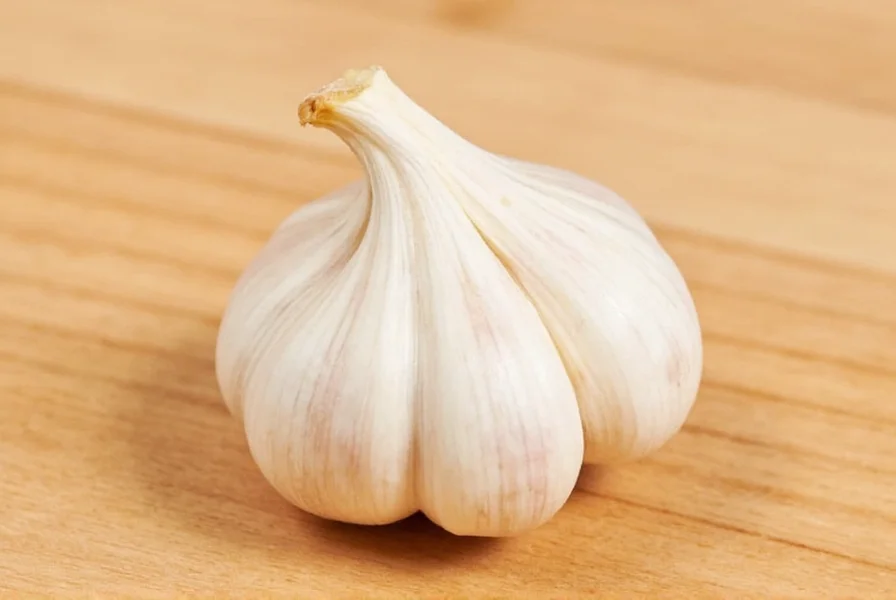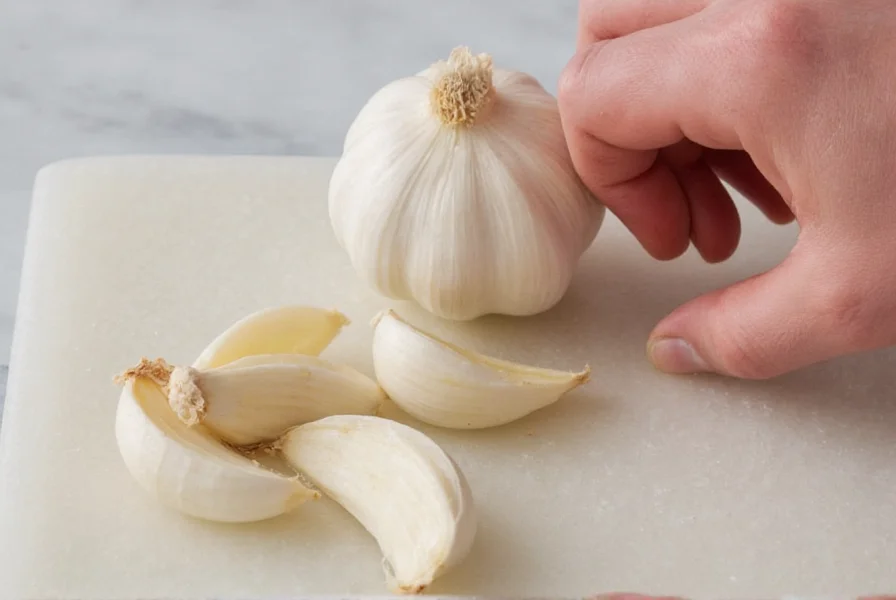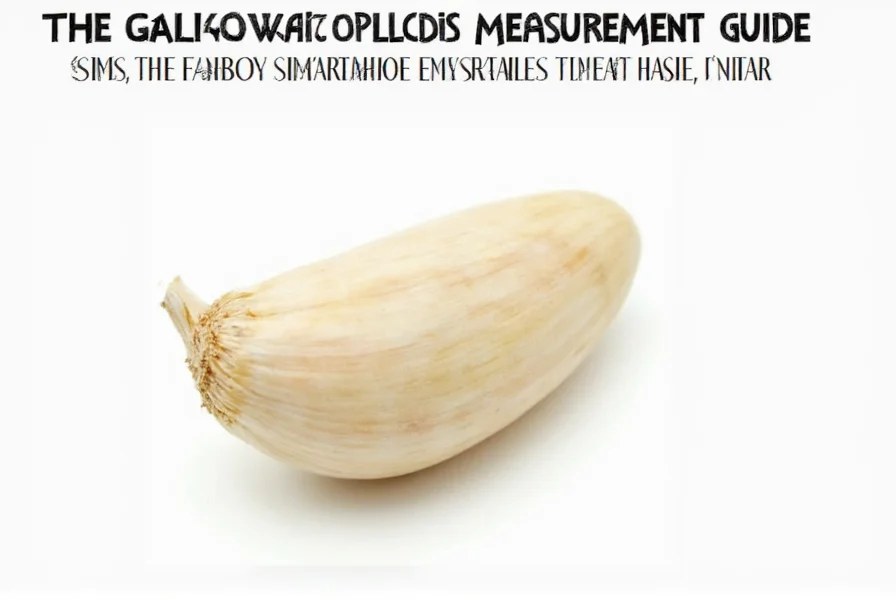Understanding garlic measurements is essential for consistent cooking results. Many home chefs struggle with recipe instructions that simply state 'one garlic clove' without providing equivalent measurements for different garlic forms. This guide delivers exact conversions you can rely on, whether you're working with fresh cloves, pre-minced garlic, or dried alternatives.
Understanding Garlic Clove Sizes and Measurements
Garlic cloves vary significantly in size, which directly impacts flavor intensity in your dishes. A 'medium' garlic clove—typically 1 inch long and 1/2 inch in diameter—serves as the standard measurement reference in most recipes. However, understanding the spectrum from small to large cloves helps prevent recipe disasters.
| Garlic Form | Small Clove | Medium Clove | Large Clove |
|---|---|---|---|
| Whole Clove | 1/2 inch diameter | 1/2-5/8 inch diameter | 5/8-3/4 inch diameter |
| Minced Garlic | 1/2 teaspoon | 1 teaspoon | 1 1/2 teaspoons |
| Garlic Paste | 1/4 teaspoon | 1/2 teaspoon | 3/4 teaspoon |
| Garlic Powder | 1/16 teaspoon | 1/8 teaspoon | 3/16 teaspoon |
When Precision Matters in Garlic Measurement
Certain recipes demand exact garlic measurements to achieve the intended flavor profile. In delicate sauces like aioli or béarnaise, even a 1/4 teaspoon difference can overwhelm subtle flavors. Preserving recipes require precise garlic-to-salt ratios for food safety. International dishes often specify garlic amounts that translate differently across measurement systems.
Consider these scenarios where precise 'one garlic clove' measurement becomes critical:
- Infused oils: Too much garlic creates botulism risk in homemade garlic oil
- Cold preparations: Raw garlic in salads or dressings has sharper flavor than cooked
- Batch cooking: Small measurement errors multiply in large quantities
- Dietary restrictions: Some individuals have garlic sensitivities requiring strict limits

Practical Substitutions for One Garlic Clove
When your recipe calls for one fresh garlic clove but you only have alternatives available, these substitutions maintain flavor balance while accommodating ingredient availability. Remember that processed garlic forms often have concentrated flavors compared to fresh.
For one medium garlic clove, use:
- 1 teaspoon freshly minced garlic (most direct substitute)
- 1/2 teaspoon garlic paste (check for added preservatives)
- 1/8 teaspoon garlic powder (use 1/4 teaspoon for roasted flavor equivalent)
- 1/2 teaspoon jarred minced garlic (drain excess liquid first)
- 1 teaspoon garlic-infused oil (for subtle background flavor)
When substituting, always add gradually and taste as you cook. Dried and processed garlic varieties intensify during cooking, unlike fresh garlic which mellows. For raw applications like salad dressings, reduce processed garlic amounts by 25% to prevent overpowering bitterness.
Maximizing Flavor from a Single Garlic Clove
Professional chefs employ specific techniques to extract optimal flavor from minimal garlic. The method of preparation significantly impacts both flavor intensity and chemical composition. Crushing releases more allicin (the compound responsible for garlic's characteristic flavor) than chopping, while roasting transforms sharp pungency into sweet nuttiness.
Try these techniques when working with just one garlic clove:
- Microplane grating: Creates ultra-fine particles that distribute evenly
- Infusion method: Steep whole clove in warm oil or broth before removing
- Delayed addition: Add garlic later in cooking for sharper flavor profile
- Combination approach: Use 3/4 clove minced plus 1/4 clove roasted for complexity

Common Garlic Measurement Mistakes to Avoid
Many home cooks make critical errors when measuring garlic that compromise their dishes. The most frequent mistake involves treating all garlic cloves as equal regardless of size. Another common issue is not accounting for how cooking method transforms garlic's flavor intensity.
Watch for these pitfalls:
- Using entire store-bought minced garlic containers without measuring
- Not adjusting for garlic age (older garlic has stronger flavor)
- Measuring garlic before removing the papery skin
- Adding all garlic at the beginning of cooking time
- Using garlic powder interchangeably with fresh without conversion
For consistent results, always measure garlic after preparation and before adding to your dish. Keep a small dedicated measuring spoon set in your cooking area for quick reference when following recipes that specify 'one garlic clove'.
Frequently Asked Questions
How much minced garlic equals one medium garlic clove?
One medium garlic clove equals exactly 1 teaspoon of freshly minced garlic. This measurement assumes the clove has been peeled, minced to uniform 1/8-inch pieces, and lightly packed. For small cloves, use 1/2 teaspoon; for large cloves, use 1 1/2 teaspoons.
Can I substitute garlic powder for one fresh garlic clove?
Yes, substitute 1/8 teaspoon of garlic powder for one medium fresh garlic clove. Remember that garlic powder has concentrated flavor and lacks the moisture of fresh garlic, so you may need to adjust liquid content slightly in baking recipes. For roasted garlic flavor equivalent, use 1/4 teaspoon garlic powder.
Why does my recipe taste too garlicky even when I used just one clove?
Several factors could cause overpowering garlic flavor: using a large rather than medium clove, adding garlic too early in cooking, not accounting for garlic age (older garlic is stronger), or using pre-minced garlic which often contains additional flavor enhancers. Try reducing to 3/4 of a medium clove next time and add it during the last 5 minutes of cooking.
How do I measure one garlic clove when it's not minced?
For chopped garlic, one medium clove equals approximately 1 1/2 teaspoons. For sliced garlic, it's about 2 teaspoons. When using whole cloves in recipes like roasted garlic or braises, one medium clove measures approximately 1 inch long by 1/2 inch in diameter. Always remove the papery skin before measuring.











 浙公网安备
33010002000092号
浙公网安备
33010002000092号 浙B2-20120091-4
浙B2-20120091-4